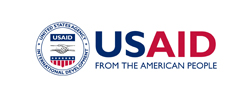.png)
2019 Global Platform Report
During the sixth session Global Platform on DRR , held in Geneva Switzerland, the 2019 edition of the Global Assessement Report (GAR) on Disaster Risk Reduction was launched. The GAR is the UN’s flagship report on DRR efforts worldwide. Published biennially, it contributes to greater access to risk information for decision making, and identifies practices for employment at the local, national, regional and international levels. The full report can be found through this Link
Highlighting the risks from air pollution, biological hazards, earthquakes, drought and climate change, the 2019 Global Assessment Report (GAR) on Disaster Risk Reduction (DRR) warns that unsustainable patterns of economic activity hide systemic risks across sectors.
The GAR, published by the UN Office for Disaster Risk Reduction (UNDRR), explains that that one disaster can quickly provoke another. For example, drought, according to the report, has wide-ranging, slow-building and cascading impacts, and can affect agriculture, water supply, energy production, transport, tourism, health, biodiversity and ecosystems.
The 2019 GAR explores the interactions among the Sendai Framework for DRR, the Paris Agreement on climate change, the New Urban Agenda (NUA), the Agenda for Humanity and the 2030 Agenda for Sustainable Development. Noting that the 2030 Agenda recognizes the central role risk reduction and resilience play in sustainable development policy, the report argues for adopting strategies to manage risk to prevent a slowing or reversal of progress towards achieving the SDGs, and highlights disaster-related targets, for which UNDRR is the custodian agency, under SDGs 1 (no poverty), 11 (sustainable cities and communities) and 13 (climate action).
The 2019 GAR notes that integrated monitoring and reporting on the Sendai Framework and the SDGs reduce duplication of data-collection efforts and the reporting burden for countries. The report looks at the contribution of the Sendai Framework Monitor to reporting on relevant SDGs by exploring cross-benefits of integrated reporting across the global frameworks and providing insights on improved opportunities for cross-reporting through different SDGs.
Among other issues, the 2019 GAR outlines current practices in developing national and local plans to enhance risk reduction capacity and integrating DRR with development planning and climate change adaptation. It showcases lessons learned in using a systems-based approach to risk reduction at national and local levels. Seeking to better understand the systemic nature of risk, the report pays special attention to rapidly growing cities and fragile/complex contexts.
The GAR also introduces the Global Risk Assessment Framework, which aims to improve the understanding and management of current and future risks to better manage uncertainties and mobilize people, innovation and finance.
Speaking at the report’s launch during the sixth session of the Global Platform on Disaster Risk Reduction (GP2019), which convened from 13-17 May 2019 in Geneva, Switzerland, Mami Mizutori, Special Representative of the Secretary-General for DRR, said that if we continue with business-as-usual, “our very survival is in doubt.” She lamented that the international development financing system allocates approximately 20 times more funding to emergency response, reconstruction, relief and rehabilitation, than to prevention and preparedness.

 WCDRR: Public Invest. in Infrastructure to Reduce Flood Disaster Risk in Algiers, Djillali Benouar
WCDRR: Public Invest. in Infrastructure to Reduce Flood Disaster Risk in Algiers, Djillali Benouar WCDRR: African Higher Education Institutions in Advancing DRR, Djillali Benouar
WCDRR: African Higher Education Institutions in Advancing DRR, Djillali Benouar
